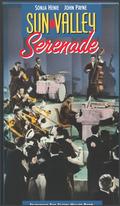
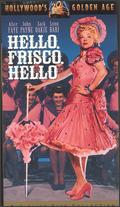
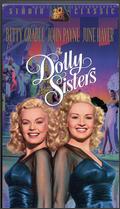
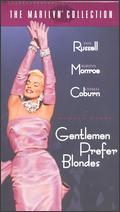
Introduction: Of the major Hollywood studios, perhaps the one with the one most consistent 'musical' policy was 20th Century Fox, who from formation in 1935, until the end of the 60s constantly produced musicals films with many of the most popular stars. The 'Fox musical canon' included: the Shirley Temple films; Sonja Henie 'icescapades'; the Alice Faye show biz tales; into the forties with Glenn Miller; Betty Grable wartime and period pieces; Carmen Miranda's 'Souse America' adventures; post war with the Grable-Dan Dailey vehicles; fifties spectaculars like There's No Business Like Show Business; Marilyn Monroe; Broadway adaptations especially Rodgers and Hammerstein; Pat Boone's 'teen appeal' films; and the epic sixties movies from The Sound of Music through to Hello Dolly in 1969.
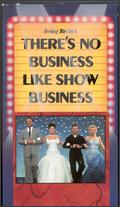
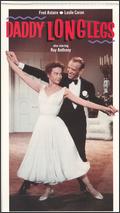
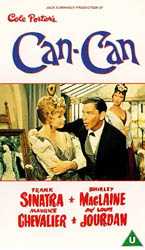
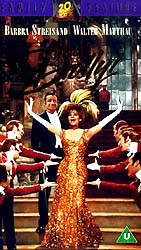
Studio Policy: The Fox musical policy was one of 'bread and butter', technically excellent, especially with the arrival of Technicolor, but not 'art' as attempted by the 'Freed Unit'. Certainly in the studio era - up to the mid 50s - the pictures were used to 'subsidize' the social dramas, prestige historical pictures etc. Entertainment remained key, and the popular/profitable musicals provided many a classic song, dance or performance.
Now
a chronological journey - through the musicals of 20th Century Fox studios
.....
1934 - 1939: (Shirley) Temple of Profit; Radio/College Days with Alice Faye; Henie on Ice:
 The
first 20th Century Fox picture was Metropolitan
(35) a musical melodrama starring Opera's Lawrence
Tibbett. A financial flop, Tibbett would make
only one more Fox feature. Also cast was
Cesar
Romero, who would play the 'latin type'
second lead in many later Fox musicals (actually an accomplished dancer
- this talent was rarely employed). Shirley
Temple however definitely made successful
movies, the number one movie attraction for four straight years, she set
Fox on a firm financial footing. She starred in dramas e.g. Curly
Top (35), comedies with songs and full musicals
like Poor Little Rich Girl
(36) and Little Miss Broadway
(38), sang many a novelty and most endearingly tap danced a treat with
Buddy
Ebsen,
George
Murphy and most specially Bill
(Bojangles) Robinson. The only other child
star to remotely challenge her was Jane
Withers would had been 'bad girl' to Temple
on Bright Eyes
(34) and also featured in a few Fox musicals including Paddy
O'Day (which had an early appearance by Rita
Hayworth),
Holy
Terror (37) and Rascals
(38).
The
first 20th Century Fox picture was Metropolitan
(35) a musical melodrama starring Opera's Lawrence
Tibbett. A financial flop, Tibbett would make
only one more Fox feature. Also cast was
Cesar
Romero, who would play the 'latin type'
second lead in many later Fox musicals (actually an accomplished dancer
- this talent was rarely employed). Shirley
Temple however definitely made successful
movies, the number one movie attraction for four straight years, she set
Fox on a firm financial footing. She starred in dramas e.g. Curly
Top (35), comedies with songs and full musicals
like Poor Little Rich Girl
(36) and Little Miss Broadway
(38), sang many a novelty and most endearingly tap danced a treat with
Buddy
Ebsen,
George
Murphy and most specially Bill
(Bojangles) Robinson. The only other child
star to remotely challenge her was Jane
Withers would had been 'bad girl' to Temple
on Bright Eyes
(34) and also featured in a few Fox musicals including Paddy
O'Day (which had an early appearance by Rita
Hayworth),
Holy
Terror (37) and Rascals
(38).
TCF's
adult musical leading lady Alice Faye
appeared twice with Temple  and from Sing Baby Sing
(36) was provided with a warmer persona in place of the 'Jean Harlow' blonde
imitation. Other singing leading ladies like
Leah
Ray, Mary Healy and
Marjorie Weaver
were
tried, as was broadway's Ethel Merman
in 3 pictures including Happy Landing
(38) and Straight Place and Show
(38) but Alice reigned supreme throughout the 30s, was among the top 10
movie performers for a couple of years and remained popular well into the
40s. Many of her best songs were by Mack
Gordon (lyrics) - the key Fox songwriter
up to the 50s and Harry Revel
(music). On the Avenue
(37) cast Alice opposite Dick Powell
borrowed from Warners (as he had been for Thanks
a Million in '35) and boasted a splendid score
from
Irving Berlin.
Berlin's Alexander's Ragtime Band
(38) - the best TCF 30s musical?, which had one of the last appearances
of petit dancer Dixie Dunbar,
before retirement at 19!! - showed how well Alice performed in period
musicals, this the first of a major Fox genre. Louis
Silvers was the main 30s musical director,
including key Faye pictures, from 'Alexander' onwards Alfred
Newman became head of music at TCF and
an industry leader.
and from Sing Baby Sing
(36) was provided with a warmer persona in place of the 'Jean Harlow' blonde
imitation. Other singing leading ladies like
Leah
Ray, Mary Healy and
Marjorie Weaver
were
tried, as was broadway's Ethel Merman
in 3 pictures including Happy Landing
(38) and Straight Place and Show
(38) but Alice reigned supreme throughout the 30s, was among the top 10
movie performers for a couple of years and remained popular well into the
40s. Many of her best songs were by Mack
Gordon (lyrics) - the key Fox songwriter
up to the 50s and Harry Revel
(music). On the Avenue
(37) cast Alice opposite Dick Powell
borrowed from Warners (as he had been for Thanks
a Million in '35) and boasted a splendid score
from
Irving Berlin.
Berlin's Alexander's Ragtime Band
(38) - the best TCF 30s musical?, which had one of the last appearances
of petit dancer Dixie Dunbar,
before retirement at 19!! - showed how well Alice performed in period
musicals, this the first of a major Fox genre. Louis
Silvers was the main 30s musical director,
including key Faye pictures, from 'Alexander' onwards Alfred
Newman became head of music at TCF and
an industry leader.
 The first major TCF signing was the third key 30s musical performer - but
not a singer or dancer. Norwegian Olympian winner
Sonja
Henie became Hollywood's greatest skating
star. Her first picture One In A Million
(36) was the first Fox musical for leading man Don
Ameche who had a pleasant tenor singing
voice.
The first major TCF signing was the third key 30s musical performer - but
not a singer or dancer. Norwegian Olympian winner
Sonja
Henie became Hollywood's greatest skating
star. Her first picture One In A Million
(36) was the first Fox musical for leading man Don
Ameche who had a pleasant tenor singing
voice.
 Apart from many non-musicals, within a year he made his first (of 6) appearances
with Faye in You Can't Have Everything
(37), played singing male lead opposite all of Fox's musical ladies, made
The
Three Musketeers (with the Ritz
Brothers) and played Stephen Foster in
Swanee
River (39) - the 1st Full Technicolor Fox
musical and their 1st biopic. The
Ritz
Brothers movies were a mixture of leading
roles in B musicals e.g. Life Begins at College
(37), Kentucky Moonshine
(38) and supporting roles in more important productions. Female musical
comedic talent on show around this time included Patsy
Kelly and Gypsy
Rose Lee (under her real name Louise
Hovick).
Apart from many non-musicals, within a year he made his first (of 6) appearances
with Faye in You Can't Have Everything
(37), played singing male lead opposite all of Fox's musical ladies, made
The
Three Musketeers (with the Ritz
Brothers) and played Stephen Foster in
Swanee
River (39) - the 1st Full Technicolor Fox
musical and their 1st biopic. The
Ritz
Brothers movies were a mixture of leading
roles in B musicals e.g. Life Begins at College
(37), Kentucky Moonshine
(38) and supporting roles in more important productions. Female musical
comedic talent on show around this time included Patsy
Kelly and Gypsy
Rose Lee (under her real name Louise
Hovick).
Also
under contract from the mid 30s was singer Tony
Martin (Mr Alice Faye of the time) who
played both leads e.g. in Sing and Be Happy
(37) and many supporting roles.
 Jack
Haley was semi-resident lead comedy actor,
his most significant role that of the 'mike-shy' singer in Wake
Up and Live (38), where he was dubbed, though
usually he performed his own vocals. The female 'comedy equivalent' under
contract was Joan Davis
who featured in Henie's Thin Ice
(37) and Sally, Irene and Mary
(38) amongst other movies. Stars who 'guested' in 30s Fox musicals
included Judy Garland
in her feature debut Pigskin Parade
(36), Eddie Cantor
in Ali Baba Goes to Town
(37) and Al Jolson
in both Swanee River
and Rose of Washington Square
(39), starring Alice Faye
in which he performed many of his classic repertoire. In the 30s the main
musical plots were often 'radio tales' or 'college campus capers'. These
were prolific days with some dozen productions a year, many low budget
but with a nucleus of talent both sides of the camera.
Jack
Haley was semi-resident lead comedy actor,
his most significant role that of the 'mike-shy' singer in Wake
Up and Live (38), where he was dubbed, though
usually he performed his own vocals. The female 'comedy equivalent' under
contract was Joan Davis
who featured in Henie's Thin Ice
(37) and Sally, Irene and Mary
(38) amongst other movies. Stars who 'guested' in 30s Fox musicals
included Judy Garland
in her feature debut Pigskin Parade
(36), Eddie Cantor
in Ali Baba Goes to Town
(37) and Al Jolson
in both Swanee River
and Rose of Washington Square
(39), starring Alice Faye
in which he performed many of his classic repertoire. In the 30s the main
musical plots were often 'radio tales' or 'college campus capers'. These
were prolific days with some dozen productions a year, many low budget
but with a nucleus of talent both sides of the camera.
1940 - 1945: Carmen Miranda's Technicolor Travelogues; Wartime Bigbands and Betty Grable; Gay 90s revisited:
 The 40s brought the Fox musical its 'glory period'. Production was cut
back to about 6 films per year and people both 'in front' and behind the
cameras were given a 'shake-up'. Alfred
Newman head of the musical department,
was joined by Charles Henderson,
Emil
Newman and later Lionel
Newman and Ken
Darby. In the early 40s it seemed Fox
had the entire three-strip Technicolor stock in the industry, with both
subject and stars suiting the rich tomes conjured by head photographer
Leon
Shamroy with
Ernest
Palmer,
Edward
Cronjager and later Harry
Jackson and Arthur
E Arling. Chief songwriters were Mack
Gordon (lyrics) and (from Warners) Harry
Warren (music). Also under contract were
Leo
Robin and Ralph
Rainger. Handing the dances chiefly were
Seymour
Felix - who excelled in vaudeville and
'olde thyme' styles; Nick Castle
who had staged some Shirley Temple dances
in the 30s helmed most of the spectacular, acrobatic speciality numbers
of the marvellous
Nicholas Brothers;
and Hermes Pan
who from '41 to '48 was chief dancer director for the Betty
Grable films (indeed her dancing partner
in 4 pictures) as well as for the other Fox blondes. Irving
Cummings - who like Castle had worked
on with Temple - was a chief director for musical productions during the
war years, as was Bruce Humberstone.
Through the decade (and indeed the 50s too) the director entrusted with
the major TCF musicals was Walter Lang.
Scripting was handled by many, the historical and chronological 'epics'
were given a polish by Lamar Trotti
and many of the 'show biz tales' were competently written by Robert
Ellis and Helen
Logan.
The 40s brought the Fox musical its 'glory period'. Production was cut
back to about 6 films per year and people both 'in front' and behind the
cameras were given a 'shake-up'. Alfred
Newman head of the musical department,
was joined by Charles Henderson,
Emil
Newman and later Lionel
Newman and Ken
Darby. In the early 40s it seemed Fox
had the entire three-strip Technicolor stock in the industry, with both
subject and stars suiting the rich tomes conjured by head photographer
Leon
Shamroy with
Ernest
Palmer,
Edward
Cronjager and later Harry
Jackson and Arthur
E Arling. Chief songwriters were Mack
Gordon (lyrics) and (from Warners) Harry
Warren (music). Also under contract were
Leo
Robin and Ralph
Rainger. Handing the dances chiefly were
Seymour
Felix - who excelled in vaudeville and
'olde thyme' styles; Nick Castle
who had staged some Shirley Temple dances
in the 30s helmed most of the spectacular, acrobatic speciality numbers
of the marvellous
Nicholas Brothers;
and Hermes Pan
who from '41 to '48 was chief dancer director for the Betty
Grable films (indeed her dancing partner
in 4 pictures) as well as for the other Fox blondes. Irving
Cummings - who like Castle had worked
on with Temple - was a chief director for musical productions during the
war years, as was Bruce Humberstone.
Through the decade (and indeed the 50s too) the director entrusted with
the major TCF musicals was Walter Lang.
Scripting was handled by many, the historical and chronological 'epics'
were given a polish by Lamar Trotti
and many of the 'show biz tales' were competently written by Robert
Ellis and Helen
Logan.
 Contractees 'let go' in the early 40s included Tony
Martin, Jack
Haley and after she had completed Young
People (40) Shirley
Temple. Sonja
Henie was paired rather improbably with
Glenn
Miller in Sun
Valley Serenade (41) and departed in '43.
Chief amongst the new intake was undoubtedly
Betty
Grable who, after a decade around Hollywood,
hit the big time in Technicolor with
Down
Argentine Way (40).
Contractees 'let go' in the early 40s included Tony
Martin, Jack
Haley and after she had completed Young
People (40) Shirley
Temple. Sonja
Henie was paired rather improbably with
Glenn
Miller in Sun
Valley Serenade (41) and departed in '43.
Chief amongst the new intake was undoubtedly
Betty
Grable who, after a decade around Hollywood,
hit the big time in Technicolor with
Down
Argentine Way (40).  By '42 Grable entered the top 10 moneymaking list, and hit number 1 the
following year, remaining in the list until 1951. Not only supplanting
Alice
Faye, who remained popular until departing
mid decade, Betty, who also sang, could dance in nearly every style and
became the biggest star
ever at Fox. Her first starrer also introduced
the amazing Carmen Miranda
- the 'Brazilian Bombshell'. Ever eager to recruit more 'Fox Blondes' the
early 40s also included Carole Landis
and more successfully Vivian Blaine,
famous later as a star of Guys and Dolls, who appeared with Laurel
and Hardy in Jitterbugs
(43). On the male side Don Ameche
and Cesar Romero
were joined in 1940 by actor John Payne,
who also possessed a pleasant light singing voice and played leading man
to Faye, Grable and the other Fox leading female stars. Chief amongst the
comedy leads/second leads was Jack Oakiewho
starred in Rise and Shine
(41), could hoof and usually got a song or two supporting the Fox ladies;
also in this vein were Phil Silvers;
and the 'female equivalent' long legged, high kicking Charlotte
Greenwood - a Fox stalwart through the
40s. In 1944 singer Dick Haymes
was also signed as leading man, to Grable and others, introducing many
hits in his films. An attempt to repeat the process with Perry
Como, starting with Something
For the Boys (44), which also featured Miranda,
Blaine and Silvers, was less successful.
By '42 Grable entered the top 10 moneymaking list, and hit number 1 the
following year, remaining in the list until 1951. Not only supplanting
Alice
Faye, who remained popular until departing
mid decade, Betty, who also sang, could dance in nearly every style and
became the biggest star
ever at Fox. Her first starrer also introduced
the amazing Carmen Miranda
- the 'Brazilian Bombshell'. Ever eager to recruit more 'Fox Blondes' the
early 40s also included Carole Landis
and more successfully Vivian Blaine,
famous later as a star of Guys and Dolls, who appeared with Laurel
and Hardy in Jitterbugs
(43). On the male side Don Ameche
and Cesar Romero
were joined in 1940 by actor John Payne,
who also possessed a pleasant light singing voice and played leading man
to Faye, Grable and the other Fox leading female stars. Chief amongst the
comedy leads/second leads was Jack Oakiewho
starred in Rise and Shine
(41), could hoof and usually got a song or two supporting the Fox ladies;
also in this vein were Phil Silvers;
and the 'female equivalent' long legged, high kicking Charlotte
Greenwood - a Fox stalwart through the
40s. In 1944 singer Dick Haymes
was also signed as leading man, to Grable and others, introducing many
hits in his films. An attempt to repeat the process with Perry
Como, starting with Something
For the Boys (44), which also featured Miranda,
Blaine and Silvers, was less successful.
With an odd exception most Fox musicals of this time could be placed in one or more of the following categories:
 The
Technicolor Travelogues: Partly sparked off as a necessity to find
other markets due to the war in Europe, and to suit the brilliant Technicolor
stock, the presence of Carmen Miranda
ensured we travelled not only
Down Argentine
Way (40) but spent A Weekend
in Havana (41) too. To ensure North America
didn't miss out we watched the Moon Over Miami
(41), sang a Song of the
(Hawaiian) Islands
(42) and spent Springtime in the
(Canadian) Rockies
(42) - and all without leaving the Fox backlot! (much)
The
Technicolor Travelogues: Partly sparked off as a necessity to find
other markets due to the war in Europe, and to suit the brilliant Technicolor
stock, the presence of Carmen Miranda
ensured we travelled not only
Down Argentine
Way (40) but spent A Weekend
in Havana (41) too. To ensure North America
didn't miss out we watched the Moon Over Miami
(41), sang a Song of the
(Hawaiian) Islands
(42) and spent Springtime in the
(Canadian) Rockies
(42) - and all without leaving the Fox backlot! (much)
The Period Pieces: One of the glories of the Fox musical - shown off to superb effect by the gleaming colour and the splendid set designs and art direction - were the period settings. Both Alice Faye and Betty Grable looked good in period costume so it was no surprise to find Fox musicals most associated with type of picture. In '43 the 2 pictures which sent Grable to the top of the moneymakers were Coney Island and Sweet Rosie O'Grady, the same year Faye appeared the song filled Hello Frisco Hello ('You'll Never Know' winning the best song Oscar for Harry Warren and Mack Gordon). The picture was set on San Francisco's Barbary Coast as was Nob Hill starring Vivian Blaine and George Raft in '45. Many of the biopics Fox produced were also set in these bygone times.
 The BioPics: Many studios based their biographical movies on the major
songwriters or performers of the day like Gershwin or Porter. Following
Swanee
River in '39, Fox generally took the careers
of lesser known composers for their heavy fictionalized screenplays. In
1942 the Paul Dresser story (played by Victor
Mature) was screened in My
Gal Sal which also starred Rita
Hayworth. Both Dick
Haymes (playing Irish composer Ernest
R Ball) and June Haver
were given starring parts, for the first time in a Fox musical, in Irish
Eyes Are Smiling. For performer biopics Fox
again took a historical route. Alice Faye
starred as Lillian Russell
(40) and one of the most successful 40s musicals was The
Dolly Sisters starring Betty
Grable and June
Haver, with John
Payne as songwriter Harry Fox. This was
the first musical to be produced by former performer George
Jessel - the major Fox musicals producer
into the 50s. Bucking the historical trend, an almost documentary feature
was produced in '44 of Four Jills in a Jeep.
This told the exploits of contemporary troop entertainers
Carole
Landis,
Kay
Francis,
Martha
Raye and
Mitzi
Mayfair with other guest appearances from
the Fox stars of the time.
The BioPics: Many studios based their biographical movies on the major
songwriters or performers of the day like Gershwin or Porter. Following
Swanee
River in '39, Fox generally took the careers
of lesser known composers for their heavy fictionalized screenplays. In
1942 the Paul Dresser story (played by Victor
Mature) was screened in My
Gal Sal which also starred Rita
Hayworth. Both Dick
Haymes (playing Irish composer Ernest
R Ball) and June Haver
were given starring parts, for the first time in a Fox musical, in Irish
Eyes Are Smiling. For performer biopics Fox
again took a historical route. Alice Faye
starred as Lillian Russell
(40) and one of the most successful 40s musicals was The
Dolly Sisters starring Betty
Grable and June
Haver, with John
Payne as songwriter Harry Fox. This was
the first musical to be produced by former performer George
Jessel - the major Fox musicals producer
into the 50s. Bucking the historical trend, an almost documentary feature
was produced in '44 of Four Jills in a Jeep.
This told the exploits of contemporary troop entertainers
Carole
Landis,
Kay
Francis,
Martha
Raye and
Mitzi
Mayfair with other guest appearances from
the Fox stars of the time.
 The Backstage Opus': As in the 30s musicals radio proved to be a fertile
backdrop in Great American Broadcast
(41). The usual background however was puttin' on a show - classically
in Footlight Serenade
(42) - rehearsals, showgirls et al. Tin Pan
Alley (40) concerned the exploits of a sister
act (and a pair of songwriters) and Springtime
in the Rockies (42) spent it's length hunting
for 'an angel with dough!' of a Broadway show. The night-clubs too provided
alternate 'show biz' milieu - a rather elaborate kitschy one was on show
in Billy Rose's Diamond Horseshoe
(45) and a twenties club (showcasing Carmen
Miranda!!?!) in Greenwich
Village (44) - the last Fox musical to feature
Don
Ameche. Entertaining the troops just had
to be the plot of Pin Up Girl
(44), with who but Betty Grable?
(assisted by Martha Raye,
Joe
E Brown and the Condos
Brothers).
The Backstage Opus': As in the 30s musicals radio proved to be a fertile
backdrop in Great American Broadcast
(41). The usual background however was puttin' on a show - classically
in Footlight Serenade
(42) - rehearsals, showgirls et al. Tin Pan
Alley (40) concerned the exploits of a sister
act (and a pair of songwriters) and Springtime
in the Rockies (42) spent it's length hunting
for 'an angel with dough!' of a Broadway show. The night-clubs too provided
alternate 'show biz' milieu - a rather elaborate kitschy one was on show
in Billy Rose's Diamond Horseshoe
(45) and a twenties club (showcasing Carmen
Miranda!!?!) in Greenwich
Village (44) - the last Fox musical to feature
Don
Ameche. Entertaining the troops just had
to be the plot of Pin Up Girl
(44), with who but Betty Grable?
(assisted by Martha Raye,
Joe
E Brown and the Condos
Brothers).
 The Star Vehicles: Although most Fox musicals were built around a particular
star or stars rather than as stories per se, Alice
Faye,
Betty
Grable and other Fox singing/dancing ladies
proved versatile enough to fit most show biz or travelogue tales. The real
'star vehicles' concerned the more rarefied talents of the 'specialist'
stars. The crafted icescapades like Iceland
(42) and Wintertime
(43) were for Sonja Henie,
the latter in tandem with the Woody
Herman orchestra,
and the band-life stories formulated for Glenn
Miller (Orchestra
Wives (42)) or Benny
Goodman (Sweet
and Lowdown (44)). In 1943 an all black talent
starrer was produced - Stormy Weather
with Lena Horne,
Bill
(Bojangles) Robinson,
Cab
Calloway,
Fats
Waller and the Nicholas
Brothers. Perhaps the ultimate in crafting
a vehicle for Carmen Miranda
came courtesy of the Busby Berkeley
routines created for her in The Gang's All
Here (43).
The Star Vehicles: Although most Fox musicals were built around a particular
star or stars rather than as stories per se, Alice
Faye,
Betty
Grable and other Fox singing/dancing ladies
proved versatile enough to fit most show biz or travelogue tales. The real
'star vehicles' concerned the more rarefied talents of the 'specialist'
stars. The crafted icescapades like Iceland
(42) and Wintertime
(43) were for Sonja Henie,
the latter in tandem with the Woody
Herman orchestra,
and the band-life stories formulated for Glenn
Miller (Orchestra
Wives (42)) or Benny
Goodman (Sweet
and Lowdown (44)). In 1943 an all black talent
starrer was produced - Stormy Weather
with Lena Horne,
Bill
(Bojangles) Robinson,
Cab
Calloway,
Fats
Waller and the Nicholas
Brothers. Perhaps the ultimate in crafting
a vehicle for Carmen Miranda
came courtesy of the Busby Berkeley
routines created for her in The Gang's All
Here (43).
The
Remakes: Darryl Zanuck
never left a successful idea alone! Probably the most remade 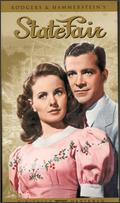 story
was the one of the three girls seeking rich husbands, first seen as a 30s
non-musical, then remade as Moon Over Miami
(41) and again as Three Little Girls in Blue
(46) - and it would be used again! The Folies
Bergere (34) storyline received a 2nd treatment
in That Night In Rio
(41), Don Ameche
playing the dual role this time.
State Fair
(the second version) became an original
Rodgers
and Hammerstein film musical in 1945 and
won the best song Oscar with 'It Might as Well Be Spring' - see also the
60s! In 1943 Betty Grable
made Sweet Rosie O'Grady
(a remake of a 30s comedy) and also Coney
Island. Seven years later she made the almost
scene for scene 'resetting'
Wabash Avenue.
Perry
Como proved he was not Dick
Powell box-office in If
I'm Lucky (46) - not the hit Thanks
a Million (35) had been.
story
was the one of the three girls seeking rich husbands, first seen as a 30s
non-musical, then remade as Moon Over Miami
(41) and again as Three Little Girls in Blue
(46) - and it would be used again! The Folies
Bergere (34) storyline received a 2nd treatment
in That Night In Rio
(41), Don Ameche
playing the dual role this time.
State Fair
(the second version) became an original
Rodgers
and Hammerstein film musical in 1945 and
won the best song Oscar with 'It Might as Well Be Spring' - see also the
60s! In 1943 Betty Grable
made Sweet Rosie O'Grady
(a remake of a 30s comedy) and also Coney
Island. Seven years later she made the almost
scene for scene 'resetting'
Wabash Avenue.
Perry
Como proved he was not Dick
Powell box-office in If
I'm Lucky (46) - not the hit Thanks
a Million (35) had been.
1946 - 1952: Grable-Dailey Tapfests; June Haver, Mitzi Gaynor and a few experiments:
1946 proved an experimental year!. In '45 Where Do We Go From Here? proved a successful musical 'fantasy' starring June Haver, Fred MacMurray and Joan Leslie with songs by Kurt Weill and Ira Gershwin. Wake Up and Dream (46) was less wonderful whimsy starring Haver with John Payne (his last Fox musical). A further Perry Como vehicle Doll Face (46) proved to be almost the final curtain for Carmen Miranda at Fox. The year also brought a picture crafted for Harry James and Dick Haymes Do You Love Me? and the last picture with an original Jerome Kern score Centennial Summer really more a period family comedy with music, a type of production more distinguished in the delightful Margie (46) both pictures starring Jeanne Crain, the latter set in the 20s with songs but no production numbers, with Lynn Bari in the cast. Joining June Haver and Vivian Blaine (in her last Fox musical) were dancer Vera-Ellen and wise-cracking Celeste Holm (her debut) in Three Little Girls in Blue (remake time again!)
 '47 Brought further streamlining. Carnival
in Costa Rica proved the last gasp for the
travelogue, it was also departure time for Dick
Haymes and Vera-Ellen.
June
Haver however became firmly established
as the number two 'Fox blonde' for the next few years, starring almost
exclusively in period pictures which in 1947 saw her cast alongside (dubbed)
Mark
Stevens in the Joe Howard biopic I
Wonder Who's Kissing Her Now one of her most
profitable films in which she danced with Gene
Nelson. The Haver/Stevens pairing was repeated
for the Fred Fisher biopic Oh You Beautiful
Doll (49) - the last Fox musical performance
for Charlotte Greenwood.
The dominant star in the post war period however remained Betty
Grable whose career now followed twin
tracks: (a) experiments like The Shocking
Miss Pilgrim (47), a comedy of behaviour with
a posthumous Gershwin
score, the operetta-like That Lady in Ermine
(48) and the western burlesque The Beautiful
Blonde From Bashful Blonde (in which Rudy
Vallee appeared and Cesar
Romero in his last Fox musical); and (b)
(more fruitfully) a dancing partnership with new signing Dan Dailey for
Mother
Wore Tights (47) - Grable's biggest hit ever,
and When My Baby Smiles At Me
(48).
'47 Brought further streamlining. Carnival
in Costa Rica proved the last gasp for the
travelogue, it was also departure time for Dick
Haymes and Vera-Ellen.
June
Haver however became firmly established
as the number two 'Fox blonde' for the next few years, starring almost
exclusively in period pictures which in 1947 saw her cast alongside (dubbed)
Mark
Stevens in the Joe Howard biopic I
Wonder Who's Kissing Her Now one of her most
profitable films in which she danced with Gene
Nelson. The Haver/Stevens pairing was repeated
for the Fred Fisher biopic Oh You Beautiful
Doll (49) - the last Fox musical performance
for Charlotte Greenwood.
The dominant star in the post war period however remained Betty
Grable whose career now followed twin
tracks: (a) experiments like The Shocking
Miss Pilgrim (47), a comedy of behaviour with
a posthumous Gershwin
score, the operetta-like That Lady in Ermine
(48) and the western burlesque The Beautiful
Blonde From Bashful Blonde (in which Rudy
Vallee appeared and Cesar
Romero in his last Fox musical); and (b)
(more fruitfully) a dancing partnership with new signing Dan Dailey for
Mother
Wore Tights (47) - Grable's biggest hit ever,
and When My Baby Smiles At Me
(48).
Dan Dailey who was Oscar nominated for his performance When My Baby Smiles At Me also appeared in many non-musicals and had some musical pictures built around himself - Give My Regards to Broadway (48)(as the son in a vaudevillian family) his father played by Charles Winninger, You Were Meant For Me (48) (as a bandleader, with Jeanne Crain) and You're My Everything (49) (a hoofer who marries a socialite at the time of arrival of talkies). An unusual final film for the 40s was based on the 30s Broadway revue The Bandwagon, produced by George Jessel it was entitled Dancing in the Dark.
 The early 50s brought a final flurry for the traditional Fox musical. Leading
men under contract at the start of the decade were 'high tenor' radio star
Dennis
Day and Broadway actor David
Wayne who could sing and dance. I'll
Get By (50) was a remake of Tin
Pan Alley updated to WWII and starring June
Haver,
Gloria
DeHaven,
Dennis
Day and Harry
James (as himself). Betty
Grable in Wabash
Avenue (50) brought the start of new choreographic
vigour, the dances staged here and for My
Blue Heaven (50) - another Grable-Dan
Dailey vehicle - by Billy
Daniel. This film also introduced the
talented singer-dancer Mitzi Gaynor
who would become the latest of the Fox blondes. She starred in Golden
Girl (51) (a biopic of Lotta Crabtree), Bloodhounds
of Broadway (51) and Down
Among the Sheltering Palms (52). In '51 Grable
and Dailey
were teamed for the last time in
Call Me Mister,
choreographed by Busby Berkeley,
also featuring Danny Thomas
and based (loosely) on a Broadway show. Choreographer
Jack
Cole (from Columbia Pictures, and later
closely associated with
Marilyn Monroe)
brought a jazz influenced refreshingly modern style to the Grable picture
Meet
Me After the Show (51) as well as to the Walter
Lang directed vehicle for Danny
Kaye On the Riviera
(51) - the third outing for the
Folies Bergere
story. The '51 film was the heavy going 'classical' opus Of
Men and Music. Two big biopics were centre
stage in '52.
Stars and Stripes Forever cast
Clifton
Webb as March king John Philip Sousa.
Even more successful was the Jane Froman (tearjerker) story (in which the
subject provided the vocals) - With a Song
In My Heart, directed by Walter
Lang starred
Susan
Hayward (Oscar nominated) and David
Wayne and gave Alfred
Newman yet another Oscar.
The early 50s brought a final flurry for the traditional Fox musical. Leading
men under contract at the start of the decade were 'high tenor' radio star
Dennis
Day and Broadway actor David
Wayne who could sing and dance. I'll
Get By (50) was a remake of Tin
Pan Alley updated to WWII and starring June
Haver,
Gloria
DeHaven,
Dennis
Day and Harry
James (as himself). Betty
Grable in Wabash
Avenue (50) brought the start of new choreographic
vigour, the dances staged here and for My
Blue Heaven (50) - another Grable-Dan
Dailey vehicle - by Billy
Daniel. This film also introduced the
talented singer-dancer Mitzi Gaynor
who would become the latest of the Fox blondes. She starred in Golden
Girl (51) (a biopic of Lotta Crabtree), Bloodhounds
of Broadway (51) and Down
Among the Sheltering Palms (52). In '51 Grable
and Dailey
were teamed for the last time in
Call Me Mister,
choreographed by Busby Berkeley,
also featuring Danny Thomas
and based (loosely) on a Broadway show. Choreographer
Jack
Cole (from Columbia Pictures, and later
closely associated with
Marilyn Monroe)
brought a jazz influenced refreshingly modern style to the Grable picture
Meet
Me After the Show (51) as well as to the Walter
Lang directed vehicle for Danny
Kaye On the Riviera
(51) - the third outing for the
Folies Bergere
story. The '51 film was the heavy going 'classical' opus Of
Men and Music. Two big biopics were centre
stage in '52.
Stars and Stripes Forever cast
Clifton
Webb as March king John Philip Sousa.
Even more successful was the Jane Froman (tearjerker) story (in which the
subject provided the vocals) - With a Song
In My Heart, directed by Walter
Lang starred
Susan
Hayward (Oscar nominated) and David
Wayne and gave Alfred
Newman yet another Oscar.
1953 - 1960: Marilyn Monroe and Merman, Broadway bound with Rodgers and Hammerstein:
 The final two George Jessel
produced musicals hit the screens in '53 Tonight
We Sing (a classical biopic) and more traditionally
Mitzi
Gaynor (as Eva Tanguay) and David
Wayne in The
I Don't Care Girl in which Oscar
Levant and Jessel himself also appeared. Although
under Fox contract on and off since the 40s, Marilyn
Monroe made her musical breakthrough in
'53 with Gentlemen Prefer Blondes
which co-starred with
Jane Russell,
particularly with the Jack Cole
choreographed 'Diamonds Are a Girls Best Friend' (Take a look at Cole's
staging of Grable's dances in Meet Me After
the Show for inspiration!). Monroe would become
a top 10 box office draw, the first Fox musical star to achieve this since
Grable. The same year saw June Haver's
last picture (The Girl Next Door)
and the last full musical at Fox (after 13 years and 10 years consecutively
top box office draw) for Betty Grable
(The Farmer Takes a Wife).
The final two George Jessel
produced musicals hit the screens in '53 Tonight
We Sing (a classical biopic) and more traditionally
Mitzi
Gaynor (as Eva Tanguay) and David
Wayne in The
I Don't Care Girl in which Oscar
Levant and Jessel himself also appeared. Although
under Fox contract on and off since the 40s, Marilyn
Monroe made her musical breakthrough in
'53 with Gentlemen Prefer Blondes
which co-starred with
Jane Russell,
particularly with the Jack Cole
choreographed 'Diamonds Are a Girls Best Friend' (Take a look at Cole's
staging of Grable's dances in Meet Me After
the Show for inspiration!). Monroe would become
a top 10 box office draw, the first Fox musical star to achieve this since
Grable. The same year saw June Haver's
last picture (The Girl Next Door)
and the last full musical at Fox (after 13 years and 10 years consecutively
top box office draw) for Betty Grable
(The Farmer Takes a Wife).
 The other 'biggie' of the year was the film of Broadway's Call
Me Madam starring Ethel
Merman, Donald
O'Connor and re-united Vera-Ellen
with Fox. Another Oscar for Alfred Newman,
it was the last big non-CinemaScope musical and directed by Walter
Lang. Lang
and Newman
brought back Merman and O'Connor (and
Irving
Berlin) and teamed them with Dan
Dailey,
Mitzi
Gaynor and Johnnie
Ray for the splashy first CinemaScope musical
There's
No Business Like Show Business (54), it would
be the last in Gaynor's Fox contract - though she would return! The same
year brought new departures in New Faces,
a revue on film highlighting Eartha Kitt
and Carmen Jones,
an all-black update of Bizet.
The other 'biggie' of the year was the film of Broadway's Call
Me Madam starring Ethel
Merman, Donald
O'Connor and re-united Vera-Ellen
with Fox. Another Oscar for Alfred Newman,
it was the last big non-CinemaScope musical and directed by Walter
Lang. Lang
and Newman
brought back Merman and O'Connor (and
Irving
Berlin) and teamed them with Dan
Dailey,
Mitzi
Gaynor and Johnnie
Ray for the splashy first CinemaScope musical
There's
No Business Like Show Business (54), it would
be the last in Gaynor's Fox contract - though she would return! The same
year brought new departures in New Faces,
a revue on film highlighting Eartha Kitt
and Carmen Jones,
an all-black update of Bizet.
 1955 brought Betty Grable
back to Fox for the last time for the semi-musical How
to Be Very, Very Popular, introducing yet
another Fox musical blonde in Sheree North
- in fact the last of the musical line, North only made two further musicals.
Much more significant was Fred Astaire's
only TCF musical Daddy Longlegs
in which he co-starred with Leslie Caron.
Dancing as superbly as ever, the hit of the Johnny
Mercer score was 'Something's Gotta Give'
- the best movie song Astaire had in the 50s? '56 brought the last songwriter
biopic in The Best Things in Life Are Free
-the
story of DeSylva, Brown and Henderson, it featured Dan
Dailey (his last Fox musical), Sheree
North and Gordon
MacRae. MacRae also starred in one of the
two Rodgers & Hammerstein
stage adaptations mounted that year - Carousel,
alongside Shirley Jones.
Far more successful was the Walter Lang
directed The King and I
which garnered an Oscar for Yul Brynner.
Musical tastes were about to change for ever and in '56 Elvis
Presley made his movie debut in Love
Me Tender at Fox.
1955 brought Betty Grable
back to Fox for the last time for the semi-musical How
to Be Very, Very Popular, introducing yet
another Fox musical blonde in Sheree North
- in fact the last of the musical line, North only made two further musicals.
Much more significant was Fred Astaire's
only TCF musical Daddy Longlegs
in which he co-starred with Leslie Caron.
Dancing as superbly as ever, the hit of the Johnny
Mercer score was 'Something's Gotta Give'
- the best movie song Astaire had in the 50s? '56 brought the last songwriter
biopic in The Best Things in Life Are Free
-the
story of DeSylva, Brown and Henderson, it featured Dan
Dailey (his last Fox musical), Sheree
North and Gordon
MacRae. MacRae also starred in one of the
two Rodgers & Hammerstein
stage adaptations mounted that year - Carousel,
alongside Shirley Jones.
Far more successful was the Walter Lang
directed The King and I
which garnered an Oscar for Yul Brynner.
Musical tastes were about to change for ever and in '56 Elvis
Presley made his movie debut in Love
Me Tender at Fox.
 Following the 'rock and roll' trend '57 brought The
Girl Can't Help It - a wild comedy which put
on film many early rock and roll performances. As the 'flip-side' to the
Presley
persona, Fox signed Pat Boone
in '57 and cast him in a series of musical pictures, April
Love (also starring Shirley
Jones) and Bernadine
in '57 (the latter bringing Janet Gaynor
back to the screen) and in '58 Mardi Gras
(also featuring Sheree North,Tommy
Sands andGary
Crosby). Boone would be the last ever long
term musical performer contractee at Fox. '57 also brought the minor Rockabilly
Baby. Other 'teen talent' presented at this
time were Tommy Sands
again in Sing, Boy, Sing (58)
and Fabian in
Hound
Dog Man (59). The biggest Fox musical in the
late 50s was Rodgers & Hammerstein's
South
Pacific (58) with Mitzi
Gaynor.
Following the 'rock and roll' trend '57 brought The
Girl Can't Help It - a wild comedy which put
on film many early rock and roll performances. As the 'flip-side' to the
Presley
persona, Fox signed Pat Boone
in '57 and cast him in a series of musical pictures, April
Love (also starring Shirley
Jones) and Bernadine
in '57 (the latter bringing Janet Gaynor
back to the screen) and in '58 Mardi Gras
(also featuring Sheree North,Tommy
Sands andGary
Crosby). Boone would be the last ever long
term musical performer contractee at Fox. '57 also brought the minor Rockabilly
Baby. Other 'teen talent' presented at this
time were Tommy Sands
again in Sing, Boy, Sing (58)
and Fabian in
Hound
Dog Man (59). The biggest Fox musical in the
late 50s was Rodgers & Hammerstein's
South
Pacific (58) with Mitzi
Gaynor.
 1959/1960
brought a final activity burst.
Bing Crosby
made his first Fox picture Say One For
Me (59) (as a priest), and was joined by Debbie
Reynolds. The following year he was back to
film High Time
(with Fabian)
which included 'The Second Time Around' amongst the Cahn/Van
Heusen score; and cameo guested in the Marilyn
Monroe feature Let's
Make Love (60) as did Gene
Kelly. The major Fox musical of the year was
Can-Can
starring
Frank Sinatra
(finally making his Fox debut after the abandonment of 'Pink
Tights' and his walk out on Carousel),
Maurice
Chevalier,
Shirley
MacLaine.
Louis
Jourdan and Juliet
Prowse.
1959/1960
brought a final activity burst.
Bing Crosby
made his first Fox picture Say One For
Me (59) (as a priest), and was joined by Debbie
Reynolds. The following year he was back to
film High Time
(with Fabian)
which included 'The Second Time Around' amongst the Cahn/Van
Heusen score; and cameo guested in the Marilyn
Monroe feature Let's
Make Love (60) as did Gene
Kelly. The major Fox musical of the year was
Can-Can
starring
Frank Sinatra
(finally making his Fox debut after the abandonment of 'Pink
Tights' and his walk out on Carousel),
Maurice
Chevalier,
Shirley
MacLaine.
Louis
Jourdan and Juliet
Prowse.
1961 - 1969: State Fair re-visited; Hello Dolly .... Goodbye Musical:
 After
the relative glut of 1960, the rest of the decade brought more limited
releases. The last musical directed by the venerable
Walter
Lang arrived in '61 - Snow
White Meets the Three Stooges!!! featuring
ice-skater Carol Heiss.
The only other releases that year were All
Hands on Deck withPat
Booneand
The Right Approach featuringGary
Crosby,
Juliet
Prowseand British
star Frankie
Vaughan.
Swingin'
Along (62)- a minor vehicle for Tommy
Sands had one moment of glory in a guest appearance
from Ray Charles.
'62 was the year of
State Fair
- reset in texas, with additional songs from Richard
Rodgers alone, it starred Pat
Boone (his last Fox musical), Ann-Margret
(her
film debut),
Bobby Darin and
briefly returning for the first time since the mid 40s Alice
Faye.
There
were NO major musical pictures released in 1963 (a first since '32!), with
'64 only producing a few songs in The Pleasure
Seekers for Ann-Margret
(a remake of Three Coins in the Fountain
(54)) and a spectacular 'on-board ship' dance sequence from Gene
Kelly and Shirley
MacLaine in the comedy What
a Way to Go! alongside
Surf Party with Bobby Vinton- which one might
have expected from American International rather than Fox.
After
the relative glut of 1960, the rest of the decade brought more limited
releases. The last musical directed by the venerable
Walter
Lang arrived in '61 - Snow
White Meets the Three Stooges!!! featuring
ice-skater Carol Heiss.
The only other releases that year were All
Hands on Deck withPat
Booneand
The Right Approach featuringGary
Crosby,
Juliet
Prowseand British
star Frankie
Vaughan.
Swingin'
Along (62)- a minor vehicle for Tommy
Sands had one moment of glory in a guest appearance
from Ray Charles.
'62 was the year of
State Fair
- reset in texas, with additional songs from Richard
Rodgers alone, it starred Pat
Boone (his last Fox musical), Ann-Margret
(her
film debut),
Bobby Darin and
briefly returning for the first time since the mid 40s Alice
Faye.
There
were NO major musical pictures released in 1963 (a first since '32!), with
'64 only producing a few songs in The Pleasure
Seekers for Ann-Margret
(a remake of Three Coins in the Fountain
(54)) and a spectacular 'on-board ship' dance sequence from Gene
Kelly and Shirley
MacLaine in the comedy What
a Way to Go! alongside
Surf Party with Bobby Vinton- which one might
have expected from American International rather than Fox.
 1965 did however produce the most financially successful Fox musical ever
- The Sound of Music
starring Julie Andrews.
Little needs to be added regarding this picture, helmed by Robert
Wise, however 1966 was another barren year.
1965 did however produce the most financially successful Fox musical ever
- The Sound of Music
starring Julie Andrews.
Little needs to be added regarding this picture, helmed by Robert
Wise, however 1966 was another barren year.  Andrew's
huge success prompted Fox into further highly expensive musicals, which
proved financially disastrous.
Dr Doolittle(67)
starring Rex Harrison failed
to recreate the success of My Fair Lady despite a generally fine score
by Leslie Bricusse.
Julie
Andrews returned for Star
in '68 - a biopic of Gertrude Lawrence which was overlong and unsuited
to Andrews. The final 'throw of the dice' was much better in the film of
Hello
Dolly! (69) which starred (a too young)
Barbra
Streisand. Directed by Gene
Kelly and period set, like many of the Fox
musicals of the glory days - proved a spectacular and energetic final
bow and hugely expensive to make. It took many years to recoup its costs.
Andrew's
huge success prompted Fox into further highly expensive musicals, which
proved financially disastrous.
Dr Doolittle(67)
starring Rex Harrison failed
to recreate the success of My Fair Lady despite a generally fine score
by Leslie Bricusse.
Julie
Andrews returned for Star
in '68 - a biopic of Gertrude Lawrence which was overlong and unsuited
to Andrews. The final 'throw of the dice' was much better in the film of
Hello
Dolly! (69) which starred (a too young)
Barbra
Streisand. Directed by Gene
Kelly and period set, like many of the Fox
musicals of the glory days - proved a spectacular and energetic final
bow and hugely expensive to make. It took many years to recoup its costs.
1970 onwards: The Aftermath:
Post
Hello
Dolly! the Fox musical dried up. Spiralling
costs and the change in music taste meant the final curtain had indeed
fallen. It would be '74 before any musical was released by Fox and this
was Paul William's Phantom
of the Paradise - a rock opera of the Phantom
of the Opera. '75 brought the cult Rocky Horror
Picture Show - a further move away from tradition.
Also in '75 the Peter Bogdanovich
'tribute' to Cole Porter At
Long Last Love arrived. Starring Burt
Reynolds and Cybil
Shepherd it proved to be very sad and embarrassing.
A musical remake of the Shirley Temple
film of 1940 The Blue Bird
(76), starring Elizabeth Taylor,
proved memorable only as the first major US-USSR co-production. The closest
attempts (but not that close) to the successful traditional films
both materialized in the last year of the decade in the 'biopic' style
The
Rose starring
Bette
Midler; and (as a co-production with Columbia)
All
That Jazz - an autobiographical story concerning
the choreographer Bob Fosse.
The
80s and beyond have proved that once and for all the Fox musical is now
an item of history.
To check out the box office champions
of the Fox musical .. go to![]() The
Box Office stars page.
The
Box Office stars page.
![]() For
links to Fox musical stars see my links
page.
For
links to Fox musical stars see my links
page.
![]() Return to Silver Clover HomeZone.
Return to Silver Clover HomeZone.
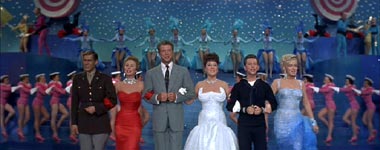
Video covers/Images are copyright© 20th Century Fox
and Fox Home Entertainment
This is an unofficial fan page for information purposes
only and no attempt is made to infringe original copyright
Text information, opinion and web page design ©
Martin Marshall 1999-2005
'Silver Clover' logo™
All rights reserved